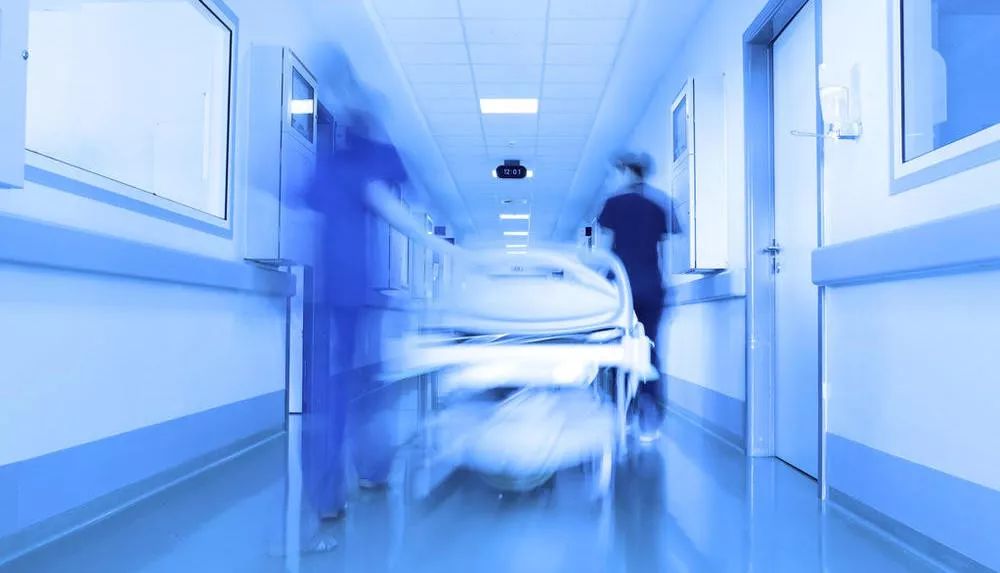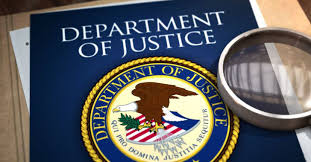Can the Hubei Red Cross, which is in deep crisis, regain public trust through blockchain technology?
Text: Pizza Ratchet Ringer Source: A Blockchain
At present, the work of the Hubei Red Cross has encountered problems. A large number of masks were sent to the Putian Department of Hospitals, so that the Union Hospital in the severely affected area could not get the masks … The Hubei Red Cross became a target of public criticism. At very moments, the credibility of public welfare charities began to be judged by the public. Blockchain technology has long been described as "making machines of trust". So, in the public welfare and charity industry, how can blockchain reshape trust?
01 crisis of trust The new crown epidemic is raging, and the whole country is paying attention to the safety of the people in Wuhan and frontline medical staff, but at this moment the Hubei Red Cross had a wave of presence.
On January 30, the Hubei Red Cross announced for the first time the use of donated materials since the outbreak: Wuhan Xiehe Hospital received 3,000 masks donated by individuals, and Wuhan Ren'ai Hospital received 16,000 masks.
- U.S. SEC Commissioner Hester Peirce proposes 3 year grace period for legal crypto projects
- Japanese officials: it is difficult to deal with China's central bank digital currency without US help
- Everything you need to know about Ethereum 2.0 in 2020
Among them, the former is the first batch of designated hospitals for the treatment of new crown pneumonia, and the latter is a private Putian department hospital that operates painless abortion and infertility diagnosis and treatment. It does not have hot clinics and does not accept fever patients.
As soon as the news came out, public opinion was uproar.
The Red Cross ’s efficiency and distribution of donations against epidemic prevention materials have also raised questions.
The Beijing News reported on January 31 that protective masks and other protective supplies were in short supply at major hospitals in Wuhan. At the same time, Wuhan Red Cross warehouses were stockpiled with large amounts of supplies.
According to the data released by the Hubei Red Cross, as of 00:00 on January 31, the accumulated donations have been 427 million yuan, the accumulated materials have been 18.76 million yuan, and the accumulated funds have totaled 440 million yuan.
So far, the Hubei Red Cross has announced the source of each payment, but the whereabouts of the public's most concerned funds have not been announced.
People all over the country are donating. Why is Wuhan Medical Frontline still anxious? What did the Hubei Red Cross do?

At the Hubei new pneumonia epidemic prevention conference on the evening of January 31, Li Qiang, a member of the party group of the Wuhan Municipal Government, explained that the Red Cross released the much-needed materials on the official website, but some of the donated materials were not the same as the types, models and standards of the much-needed materials Exactly.
He said that there are some gaps in the work, such as the turnover is not fast enough, and the transfer is not timely, "these need to be improved in the work."
Soon, the website of the Hubei Provincial Commission for Discipline Inspection showed that three leaders of the Hubei Red Cross were held accountable and Zhang Qin, the full-time vice chairman, was removed from office.
Zheng Gongcheng, deputy chairman of the China Charity Federation, believes that the donation of funds and materials cannot be used in a timely manner, and the hospitals are asking for help, which is caused by the lack of an effective information sharing platform and multi-party coordination mechanism .
How to solve the crisis of trust caused by the Hubei Red Cross? One answer is to rely on the blockchain.
How to make donors trust and build credibility has always been a major problem for the public welfare industry. Credibility needs to be ensured by transparency, but some charities lack the necessary supervision and auditing and cannot be transparent.
The blockchain has the characteristics of decentralization, non-tampering, and traceability. It can process donation information and funds flow on the chain, from the project, review, start donation to the payment in place, the entire chain records.
The information on the chain can not only be tampered with, but also be easily traced. With the blockchain, the credibility of non-profit organizations will also be improved.
In response to the problems of public welfare donations and material distribution during the epidemic, the domestic blockchain team responded quickly. There have been multiple "blockchain + public welfare" projects online, or they will be launched in the near future.
One of the 33 charity blockchain registration platforms owned by Hangzhou Complex Beauty Technology Co., Ltd. As long as individuals and enterprises complete real-name authentication, they can publicize their donations, volunteers or blood donation information on this platform. After registration, the hash value of these information will be stored on the blockchain. When other people log on to the platform, they can query all the publicized donation records. The record content includes donation details, time of on-chain and deposit address.
Wu Sijin, the founder of Hangzhou Complex Beauty Technology Co., Ltd. said that at present, the donation information on the platform mainly covers two types: one is the donation information uploaded by individual donors, and the other is the donation information collected by authoritative public channels.
"This information was originally intended to be publicized on the Internet. However, compared to Internet publicity, the blockchain process is open and transparent, and data cannot be tampered with," he said.
"Now there are 4 organizations that will upload information to our platform at the same time," Wu Sijin said. "We have also contacted hundreds of charities and invited them to link the charity donation information to the chain."
Official data show that at present, this platform has achieved 6,111 public welfare information on-chain.
Wu Sijin said that next, they will also cooperate with charity organizations to invite the other party to participate in the confirmation of donations, and the confirmation signature will also be completed on the chain.
On February 4th, FunChain Technology also announced that it will cooperate with multiple enterprises to jointly release a source-tracing platform for charity donation management based on blockchain technology.
FunChain Technology said that the platform will be based on the alliance's blockchain network, inviting major donor agencies and foundations to put data on the chain, using blockchain technology features to improve information transparency and credibility, and tracing and managing donated materials from various corporate teams 3. Use of donated funds to optimize the material distribution process.
It is reported that the platform collects on-chain information, including donation certificates, logistics waybills, and sender receivers, to solve the three major problems of "difficult to demand, difficult to donate, hard to believe the masses."
Currently, they are intensively collecting donation information.
QuChain Technology stated that the platform will launch functions such as rescue demand release, donation information release, donation and rescue information publicity, supervision and inquiry.
"The platform will be online in the near future." Funchain technology staff told a blockchain.
The combination of blockchain and charity is not new. Since 2016, dozens of blockchain applications have been implemented in the domestic philanthropy field, involving donations, traceability, and information sharing.
But the road of blockchain + charity is not smooth.
"As early as 2016, when I was working at a bank, I developed a charity donation system based on blockchain." Zhang Beilong, deputy general manager of Funchain Technology Beijing Branch, told a blockchain.
At the beginning of the project, he was full of confidence in the project and firmly believed that the blockchain can help the charity industry to make the donation information open, traceable, and tamper-proof, while protecting privacy.
From a purely technical perspective, blockchain can indeed achieve these goals.
However, the landing of any technology can not only focus on the technology itself. Perhaps the biggest problem encountered by blockchain practitioners is the difficulty of advancing the project.
"Many charitable organizations will collect management fees from donated funds, and some organizations even charge 20% -30%." Zhang Beilong said that he contacted multiple charities at that time, and then lost the following.
"When you want to disrupt an industry with blockchain technology, you will definitely be greatly resisted." Zhang Beilong said.

And the perception of charities is in dire need of change. The heads of some charities do not understand the blockchain, and their internal decision-making processes are also long.
"Many charitable funds are unwilling to go on the chain. In contrast, Internet companies and users have been relatively active." Wu Sijin said.
Another major difficulty of blockchain + charity is source fraud.
"At present, we can't do the absolute truth of the on-chain information, we can only do it relatively." Wu Sijin said.
The strategy adopted by the charity platform is that individuals or businesses must pass real-name authentication when the registration information is chained, that is, the individuals or businesses are responsible for their actions.
"If you want the P picture, we can't help it," Wu Sijin admitted. "But once the fake information is on the chain, it cannot be modified, and it will become a credit stain on the counterfeiters."
In his opinion, blockchain + charity is a gradual process. The more participants on the platform, the more attractive it becomes. "It's like when Taobao first started, there was no guarantee that there would be no fakes. But as the platform became larger, it would naturally improve gradually."
In fact, many blockchain practitioners believe that technology alone cannot change an industry.
"Many problems in the field of public welfare and charity require 'governance' to solve them." Zhang Beilong said, "governance can be understood as 'management of management', that is, the use of higher-level institutions to promote.
Blockchain technology can provide a platform, but it cannot replace communication and collaboration between people.
In fact, the implementation of blockchain technology in almost all fields will face such problems.

From the "Guo Meimei Incident" to the "mask door", trust has always been the "life gate" of charity organizations.
The epidemic situation may become an opportunity for the blockchain to "capture" public welfare and charity.
Driven by external forces, blockchain technology is expected to reshape charity organizations.
We will continue to update Blocking; if you have any questions or suggestions, please contact us!
Was this article helpful?
93 out of 132 found this helpful
Related articles
- Blockchain technology wars God of Plague, "Material traceability, electronic invoice, logistics tracking, payment"
- The possibility of the Federal Reserve issuing coins has greatly increased, the director talked about Libra, digital RMB and stablecoin
- Full analysis of decentralized storage track core projects: Filecoin, Storj and Arweave
- 2019 Global Blockchain Investment and Financing Report: The number of global blockchain field financings is 543, with a financing amount of 23.83 billion yuan
- Fidelity leads investment, blockchain settlement company Clear secures $ 13 million in Series A financing
- Intercontinental Exchange ICE acquires software service provider Bridge2, ready to launch applications for Bakkt
- SIM card exchange attacks stolen coins, how can Bitcoin practitioners protect themselves?






